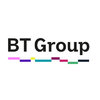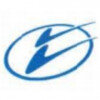Filter interviews by
ACT Fibernet NOC Engineer Interview Questions and Answers
8 Interview questions
The port number used by DHCP is 67 (server) and 68 (client).
Port 67 is used by DHCP server to listen for client requests
Port 68 is used by DHCP client to send requests to the server
DHCP uses UDP protocol for communication
Understanding IP address pools involves calculating the range of usable IPs based on the given subnet mask.
Identify the network address by applying the subnet mask to the IP address.
Calculate the broadcast address, which is the last address in the subnet.
Determine the range of usable IP addresses, which excludes the network and broadcast addresses.
Example: For IP 192.168.1.10 with a mask of 255.255.255.0, the netw...
Networking is the practice of connecting computers and other devices to share resources and information.
Networking involves the use of hardware such as routers, switches, and cables to create a network.
It also includes the use of software protocols like TCP/IP to facilitate communication between devices.
Networking allows devices to share resources such as files, printers, and internet connections.
Examples of netwo...
Dhora process is a method used to troubleshoot network issues by analyzing logs and identifying the root cause.
Dhora process involves collecting logs from various network devices
Logs are analyzed to identify the root cause of the issue
Once the root cause is identified, appropriate action is taken to resolve the issue
This process helps in minimizing downtime and improving network performance
IP stands for Internet Protocol. It is a set of rules that governs the format of data packets sent over a network.
IP is responsible for addressing and routing packets across the internet.
There are two versions of IP: IPv4 and IPv6.
IPv4 uses 32-bit addresses and supports approximately 4.3 billion unique addresses.
IPv6 uses 128-bit addresses and supports an enormous number of unique addresses.
IPv6 was introduced to ...
ISIS and MDLS are protocols used in networking for routing and network management.
ISIS (Intermediate System to Intermediate System) is a routing protocol used to exchange routing information between network devices.
MDLS (Management Data Input/Output Link Service) is a protocol used for network management tasks such as monitoring and configuration.
ISIS is commonly used in large enterprise networks and internet serv...
DHCP assigns IP addresses, DNS translates domain names to IP addresses, VLAN separates network traffic, IPv4 has 32-bit addresses, IPv6 has 128-bit addresses.
DHCP (Dynamic Host Configuration Protocol) assigns IP addresses to devices on a network dynamically.
DNS (Domain Name System) translates domain names to IP addresses.
VLAN (Virtual Local Area Network) separates network traffic into different segments.
IPv4 has 3...
OSI Layers are a model for network communication. There are 7 layers, each with a specific function.
Layer 1 - Physical layer: Transmits raw data bits over a physical medium
Layer 2 - Data link layer: Provides error-free transfer of data frames between nodes
Layer 3 - Network layer: Routes data packets between networks
Layer 4 - Transport layer: Provides reliable end-to-end data delivery and error recovery
Layer 5 - Se...
ACT Fibernet NOC Engineer Interview Experiences
5 interviews found
I applied via Walk-in and was interviewed in Jan 2024. There was 1 interview round.
(4 Questions)
- Q1. 1.what is the port no used by DHCP?
- Ans.
The port number used by DHCP is 67 (server) and 68 (client).
Port 67 is used by DHCP server to listen for client requests
Port 68 is used by DHCP client to send requests to the server
DHCP uses UDP protocol for communication
- Q2. 2.OSPF states ? 3.VTP Pruning? 4.what is DHCP? 5.what is Reverse ARP and how it is different from DHCP?
- Q3. 3.They will give you Ip address and mask you need to tell the pools of Ip's?
- Ans.
Understanding IP address pools involves calculating the range of usable IPs based on the given subnet mask.
Identify the network address by applying the subnet mask to the IP address.
Calculate the broadcast address, which is the last address in the subnet.
Determine the range of usable IP addresses, which excludes the network and broadcast addresses.
Example: For IP 192.168.1.10 with a mask of 255.255.255.0, the network i...
- Q4. 4.What is ISIS and MDLS
- Ans.
ISIS and MDLS are protocols used in networking for routing and network management.
ISIS (Intermediate System to Intermediate System) is a routing protocol used to exchange routing information between network devices.
MDLS (Management Data Input/Output Link Service) is a protocol used for network management tasks such as monitoring and configuration.
ISIS is commonly used in large enterprise networks and internet service p...
Interview Preparation Tips
- Routing protocols
- Switching
- Basic Networking Protocols
Simply they waited us for 2 hours.
Don't know they are Conducting Walk in Interviews or Simply wasting our time.
So, Please Be aware of this Company.
Skills evaluated in this interview
I applied via Walk-in and was interviewed in Jul 2023. There were 3 interview rounds.

(2 Questions)
- Q1. What is networking?
- Ans.
Networking is the practice of connecting computers and other devices to share resources and information.
Networking involves the use of hardware such as routers, switches, and cables to create a network.
It also includes the use of software protocols like TCP/IP to facilitate communication between devices.
Networking allows devices to share resources such as files, printers, and internet connections.
Examples of networking...
- Q2. What is DHCP,DNS,VLAN,size of IPv4 and IPv6,
- Ans.
DHCP assigns IP addresses, DNS translates domain names to IP addresses, VLAN separates network traffic, IPv4 has 32-bit addresses, IPv6 has 128-bit addresses.
DHCP (Dynamic Host Configuration Protocol) assigns IP addresses to devices on a network dynamically.
DNS (Domain Name System) translates domain names to IP addresses.
VLAN (Virtual Local Area Network) separates network traffic into different segments.
IPv4 has 32-bit...
(1 Question)
- Q1. Osi layer,dhcp snooping, tcp/ip, basic questions about is-is,ospf,bgp, different between default vlan and native vlan, Stp, cisco switch models, ip address types, telnet, ssh, syslog, snmp, vpn, radius ser...
Interview Preparation Tips
Skills evaluated in this interview

(1 Question)
- Q1. Complete switching Understanding the concept of routing and subnetting
(1 Question)
- Q1. Tell me about yourself
Interview Preparation Tips
I applied via Naukri.com and was interviewed in Feb 2022. There were 3 interview rounds.

(2 Questions)
- Q1. About basics of networking and IP address
- Ans. Networking is a group of systems connected together to share important information and resources .
- Q2. What is IP and versions of IP
- Ans.
IP stands for Internet Protocol. It is a set of rules that governs the format of data packets sent over a network.
IP is responsible for addressing and routing packets across the internet.
There are two versions of IP: IPv4 and IPv6.
IPv4 uses 32-bit addresses and supports approximately 4.3 billion unique addresses.
IPv6 uses 128-bit addresses and supports an enormous number of unique addresses.
IPv6 was introduced to addre...
(3 Questions)
- Q1. What are your salary expectations?
- Ans.
I'm looking for a competitive salary that reflects my skills and experience in the NOC field, ideally in the range of $60,000 to $80,000.
Research industry standards: For NOC Engineers, salaries typically range from $50,000 to $80,000 depending on experience.
Consider location: Salaries can vary significantly based on the cost of living in different regions.
Highlight your skills: If you have certifications like CCNA or e...
- Q2. What are your strengths and weaknesses?
- Q3. Tell me about yourself.
Interview Preparation Tips
- Networking
- Java
Skills evaluated in this interview
I applied via Referral and was interviewed before Apr 2022. There were 2 interview rounds.

(4 Questions)
- Q1. Explain Dhora Process
- Ans.
Dhora process is a method used to troubleshoot network issues by analyzing logs and identifying the root cause.
Dhora process involves collecting logs from various network devices
Logs are analyzed to identify the root cause of the issue
Once the root cause is identified, appropriate action is taken to resolve the issue
This process helps in minimizing downtime and improving network performance
- Q2. CCNA related topics
- Q3. Subnet CIDR questions
- Q4. OSI Layers list and function
- Ans.
OSI Layers are a model for network communication. There are 7 layers, each with a specific function.
Layer 1 - Physical layer: Transmits raw data bits over a physical medium
Layer 2 - Data link layer: Provides error-free transfer of data frames between nodes
Layer 3 - Network layer: Routes data packets between networks
Layer 4 - Transport layer: Provides reliable end-to-end data delivery and error recovery
Layer 5 - Session...
Skills evaluated in this interview
Top trending discussions






Interview questions from similar companies

I appeared for an interview before Sep 2016.
Interview Questionnaire
10 Questions
- Q1. Basic questions based communication
- Q2. Tell me about Ur work experience
- Ans.
I have over 5 years of experience working as a Noc Engineer in various IT companies.
Managed network operations and troubleshooting for large-scale networks
Implemented network monitoring tools to ensure network performance and security
Collaborated with cross-functional teams to resolve network issues quickly and efficiently
- Q3. What networking
- Ans.
Networking refers to the practice of connecting devices together to share resources and communicate with each other.
Networking involves the use of protocols and technologies such as TCP/IP, DNS, DHCP, and VLANs.
Common networking devices include routers, switches, firewalls, and access points.
Networking can be used for a variety of purposes, such as sharing files and printers, accessing the internet, and enabling commun...
- Q4. What is a OSPF and explain stages
- Q5. Ospf administration count
- Q6. VLAN and intervlan different,
- Ans.
VLANs segment networks, while inter-VLAN routing enables communication between different VLANs.
VLAN (Virtual Local Area Network) is a logical grouping of devices on the same physical network.
Inter-VLAN routing allows traffic to flow between different VLANs, typically using a router or Layer 3 switch.
Example of VLAN: Devices in the same department (e.g., HR) can be on VLAN 10, while IT devices are on VLAN 20.
Example of ...
- Q7. Which place are use intervlan
- Ans.
Inter-VLAN routing is used to enable communication between different VLANs in a network.
Used in enterprise networks to segment traffic for security and performance.
Example: A company has VLANs for HR, Sales, and IT; inter-VLAN routing allows them to communicate.
Implemented using Layer 3 switches or routers to route traffic between VLANs.
Essential for services like VoIP and video conferencing that require communication ...
- Q8. Same particle test
- Q9. Same subneting questions
- Q10. Disease salary
Interview Preparation Tips
Experience: This round simple
Round: Technical + HR Interview
Experience: I am example one by one but difficult in IP conspt
Round: HR Interview
Experience: He is give good salary so I am accept
Skills evaluated in this interview

Interview Questionnaire
1 Question
- Q1. CCNA routing switching mpls ipv4 Bgp

NOC Engineer Interview Questions & Answers
Tata Communications Transformation Servicesposted on 29 Jun 2022
I applied via Approached by Company and was interviewed before Jun 2021. There were 2 interview rounds.

(1 Question)
- Q1. All about call flow and basic networking related.
Interview Preparation Tips

- Q1. Tell me something about yourself
- Q2. Basic questions about computer

NOC Engineer Interview Questions & Answers
Aerial Telecom Solutionsposted on 8 Jan 2024
Questions about networking and English
(2 Questions)
- Q1. Questions about technical knowledge of network
- Q2. What is arp? What is HSRP? WHAT IS GLBP? WHAT IS NAT
- Ans.
ARP is a protocol used to map an IP address to a physical MAC address on a local network.
ARP stands for Address Resolution Protocol.
It operates at the Data Link Layer of the OSI model.
ARP is used to resolve IP addresses to MAC addresses.
It is essential for communication between devices on the same network.
ARP requests are broadcasted to all devices on the network.
Example: When a computer wants to send data to another d...
Skills evaluated in this interview
ACT Fibernet Interview FAQs
Tell us how to improve this page.
ACT Fibernet Interviews By Designations
- ACT Fibernet Network Engineer Interview Questions
- ACT Fibernet Management Trainee Interview Questions
- ACT Fibernet Senior Executive Interview Questions
- ACT Fibernet NOC Engineer Interview Questions
- ACT Fibernet Senior Network Engineer Interview Questions
- ACT Fibernet Team Lead Interview Questions
- ACT Fibernet Sales Executive Interview Questions
- ACT Fibernet Senior Sales Executive Interview Questions
- Show more
Interview Questions for Popular Designations
Overall Interview Experience Rating
based on 4 interview experiences
Difficulty level
Duration
NOC Engineer Interview Questions from Similar Companies
ACT Fibernet NOC Engineer Reviews and Ratings
based on 41 reviews
Rating in categories
|
Network Engineer
1.2k
salaries
| ₹2 L/yr - ₹5.8 L/yr |
|
Senior Network Engineer
581
salaries
| ₹2.5 L/yr - ₹6 L/yr |
|
Team Lead
322
salaries
| ₹3.5 L/yr - ₹8.3 L/yr |
|
Senior Executive
309
salaries
| ₹2.1 L/yr - ₹6.2 L/yr |
|
Sales Executive
227
salaries
| ₹2 L/yr - ₹4.7 L/yr |

Vodafone Idea

Bharti Airtel

Ericsson

Tata Communications
- Home >
- Interviews >
- ACT Fibernet Interview Questions













